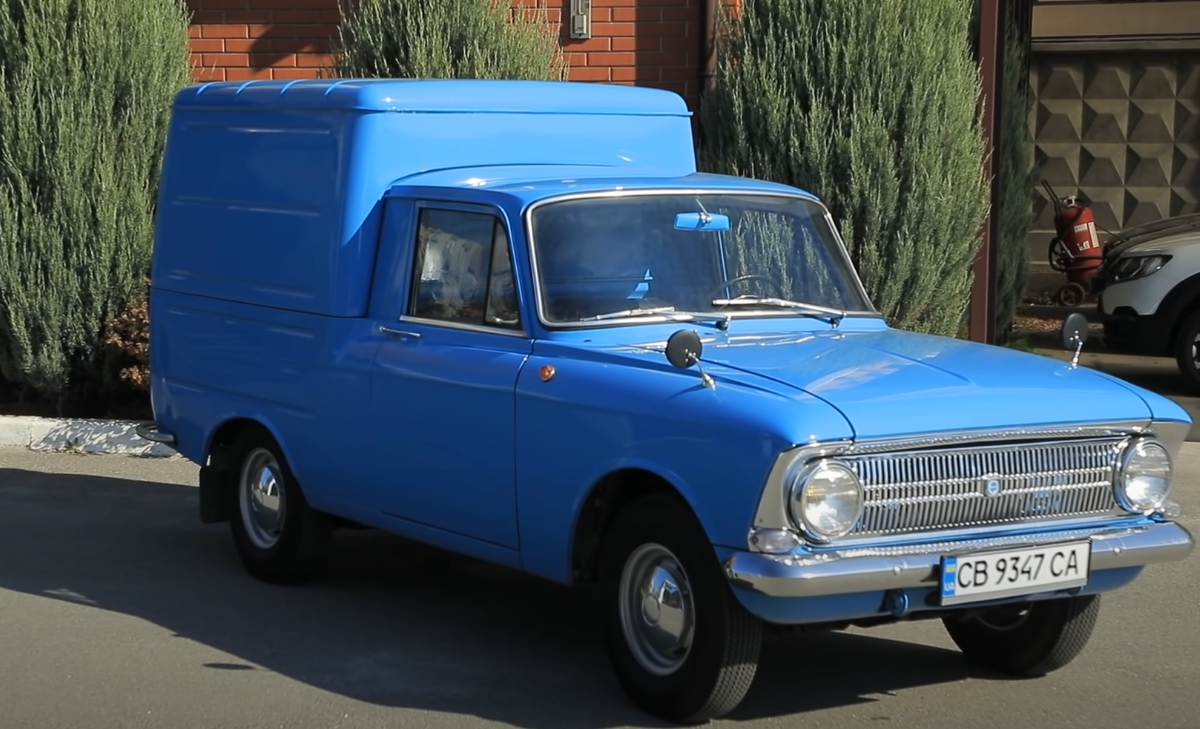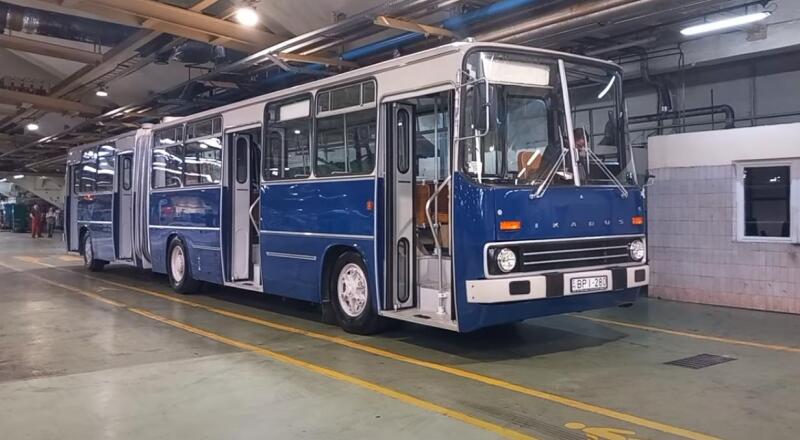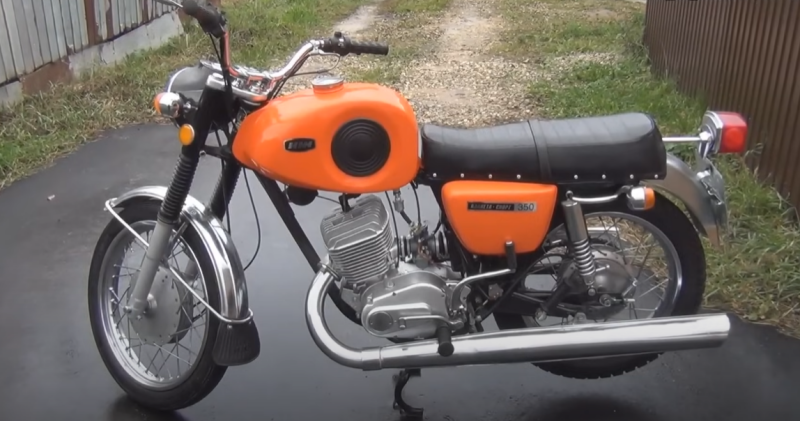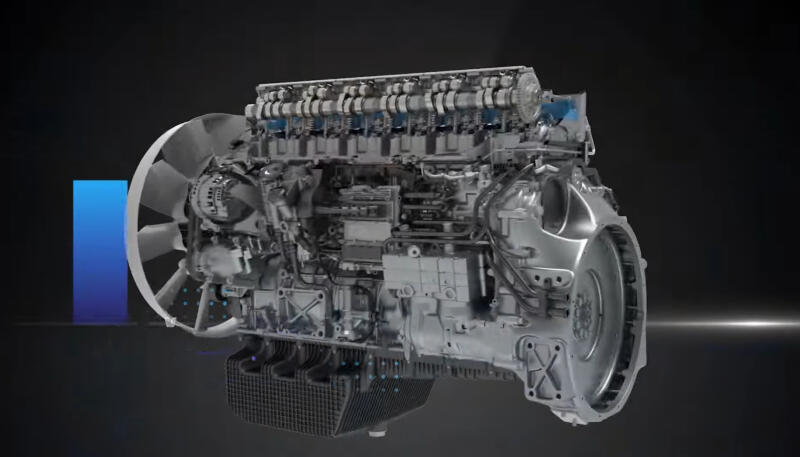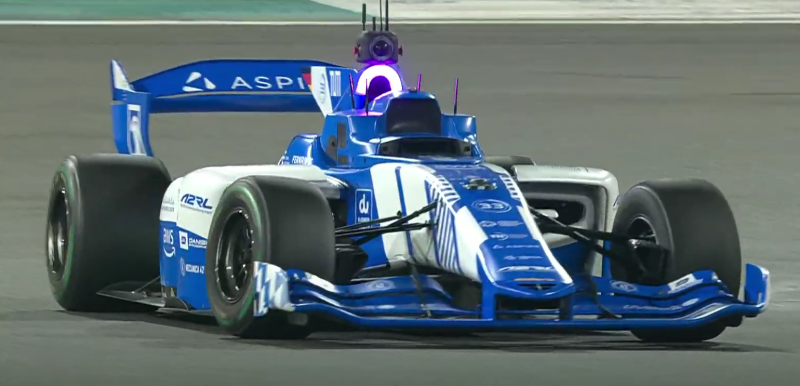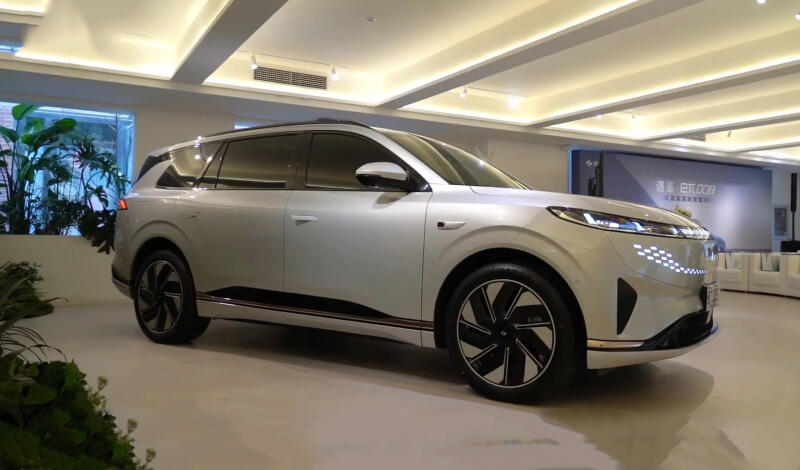In general, the problem is obvious, for the sake of small loads it was necessary to drive medium-duty vehicles, such as GAZ-52/53.
The problem was partially solved in 1972, when the production of IZH-2715 vans began at the Izhevsk Automobile Plant. There were also pickups in this body, but they never differed in mass character. And it was not very convenient to operate such cars in the city - the open body provoked all sorts of dishonest individuals to misappropriate something.
 It is almost impossible to find a car in this condition now. Photo: Youtube.com
It is almost impossible to find a car in this condition now. Photo: Youtube.comIZH-2715 was produced for almost 30 years - from 1972 to 2001. This already speaks of his demand. Unlike other car models, the van came to the court for Russia after the collapse of the USSR.
The appearance of IZH-2715
The MZMA / AZLK plant has been at the peak of popularity since the early 1960s. Now it's hard to believe it, but since those years and almost until the mid-1970s, "Moskvich" was in great demand abroad.
More than half of the cars went abroad, where they were sold out due to the low price and successful performance of these cars in rally competitions.
The MZMA Design Bureau (AZLK since 1968) was constantly working on new models. For example, there were all-wheel drive and off-road cars, coupes on the chassis of the 408 version. But all these projects were curtailed - the production did not have time to make already mastered models.
Until 1972, Moskvich-433/434 was used as a light delivery vehicle, but they were produced in small batches and were chronically lacking. Therefore, when the Izhevsk Automobile Plant began to be built in the USSR, it had to take over the production of commercial vans. Since 1968, Moskvich-434 was assembled in Izhevsk, and since 1972 - Izh-2715.
 Under the hood, there were often derated engines for 76 gasoline. Photo: Youtube.com
Under the hood, there were often derated engines for 76 gasoline. Photo: Youtube.comInitially, it was supposed to install a body on a delivery vehicle, like on trucks, but this led to problems. We needed a car that can be assembled on the same conveyors as passenger modifications. As a result, IZH-2715 appeared, made on the basis of Moskvich-412.
Features of the model
To begin with, it should be noted that the van was created in such a way that the hard top could be removed. After that, the body turns into a pickup truck.
According to the passport, the car's carrying capacity was 450 kg, but it handled twice as much cargo without any problems, which was repeatedly proven in the 1990s. Of course, the model could not withstand such barbaric exploitation for a long time, but it managed to work out its value several times.
Two engines were installed under the hood - gasoline UZAM-412E / 412DE with a power of 75 and 67 liters. With. respectively.
Back in the 1970s, Soviet drivers and those who wanted to become them dubbed the Heel car for its characteristic body shape. As for the nickname "Pie", it appeared a little later, after these cars began to deliver bakery and confectionery products.
IZH-2715 was used by post, household services, catering enterprises, research institutes and other organizations that need to transport light, but quite bulky goods.
 Cargo-passenger versions began to be produced in 1988. Photo: Youtube.com
Cargo-passenger versions began to be produced in 1988. Photo: Youtube.comAlready at the beginning of the release of the model, it became clear that the IZH-2715 was superior to the Moskvich-434 both in terms of the size of the van and in terms of functionality. In the 1980s, commercial Muscovites were abandoned in favor of the Izhevsk model.
The funny thing is that in the production of IZH-2715 it was more expensive than the cargo UAZ-452D and even the medium-duty GAZ-51. But in the process of operation, due to the consumption of fuels and lubricants being less than twice, the difference leveled out. And then the car helped to save the budget.
Generational Features
The car was produced in two generations. The first debuted in 1972 and was assembled until 1982. On IZH-2715 they put the front part from Moskvich-412.
For export modifications, a radiator grille and headlights from IZH Combi were often used. Lighting equipment was imported (GDR).
 Early versions can be identified by the characteristic grille. Photo: Youtube.com
Early versions can be identified by the characteristic grille. Photo: Youtube.comThe second generation debuted in 1982. In accordance with Soviet traditions, the update brought a reduction in the cost of production and some simplification. The model received a radiator grille with round headlights, doors without vents and new handles.
Cargo-passenger modification
For a long time, the car was produced in only one version - a cargo van / pickup truck. But in the second half of the 1980s, a new version of the machine had to be urgently developed.
There were several reasons for this:
- ? The most important is the requirements “from above” to produce new models or upgrade old ones.
- ? Since 1987, the company has become self-sufficient
- ? A class of cooperators appeared who needed just such a universal car
- ? Lack of competitors
Converting a light cargo van was not difficult. It is enough to insert windows, install seats and finish the walls with plastic.
The car received the index 27156. Its production began in 1988 and continued until 2001.
Unusual modifications that did not become serial
In the 1990s, Izhevsk designers repeatedly tried to increase the catastrophically falling sales of their cars. Since the demand for vans remained stable, albeit small, they decided to produce new models based on them.
 Soviet pickup in all its glory! Photo: Youtube.com
Soviet pickup in all its glory! Photo: Youtube.comCreated several experimental vehicles for ambulances, firefighters and rescuers. The vans were lengthened, but their carrying capacity was not enough, as was the engine power.
There was an interesting attempt to create a five-seat pickup truck on the IZH Combi chassis using a body from 2715. But the car turned out to be clearly unsuccessful, since the cargo platform was simply welded instead of the trunk.
Myths about IZH-2715
Over the years of production, the model of a light pickup truck has managed to acquire many legends. The main reason for their appearance was the unavailability of IZH-2715 for private individuals. But passenger-and-freight versions were sold in the late 1980s, although there were few of them.
The first myth says that the IZH-2715 was created specifically for export, but it was abandoned abroad. So I had to urgently adapt the car for operation in the USSR.
During the development of the car, the sight for export took place, but its main purpose was for the domestic market.
IZH-2715 was delivered abroad, but not in such quantities as planned. The basic platform Moskvich-412 was hopelessly outdated by that time, and was not in great demand.
In the Soviet Union, it was believed that IZH-2715 was produced in small batches. In fact, this is far from being the case; for almost 30 years, the Izhevsk Automobile Plant has made more than 2 cars of this model. It’s just that the car was delivered to all corners of the USSR, so it didn’t meet “heap”.
 A version extended by half a meter and this is not homemade! Photo: Youtube.com
A version extended by half a meter and this is not homemade! Photo: Youtube.comThere were rumors that IZH-2715 was technically no different from sedans and Kombi. This is true - the car was different only in terms of bodywork - this is its main plus.
Drivers in the USSR claimed that vans could be purchased in private hands with connections. In fact, even decommissioned ones were not sold until 1992. They implemented a cargo-passenger modification, and for this it appeared in 1988.
It’s just that the drivers of IZH-2715 often “hacked” on official cars, hence the legend appeared.
Well, the last myth - it was believed that the plant deliberately underestimated the carrying capacity at around 400-450 kg. Say, IZH-2715 is able to transfer a ton! Yes, the car coped with such loads, but it did not benefit him. So 450 kg is the right figure for trouble-free operation.
Back in the first decade of the 2000s, IZH-2715 were often found on the roads, and were even in high demand among market traders. Now these cars are retired, but still, sometimes you can see a familiar silhouette that invariably causes a nostalgic smile!
